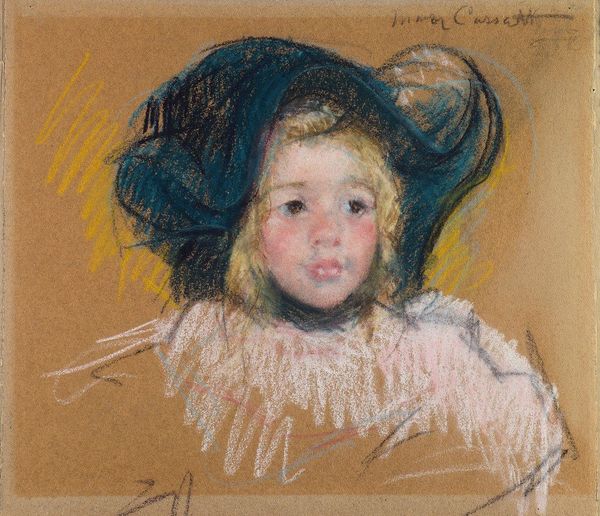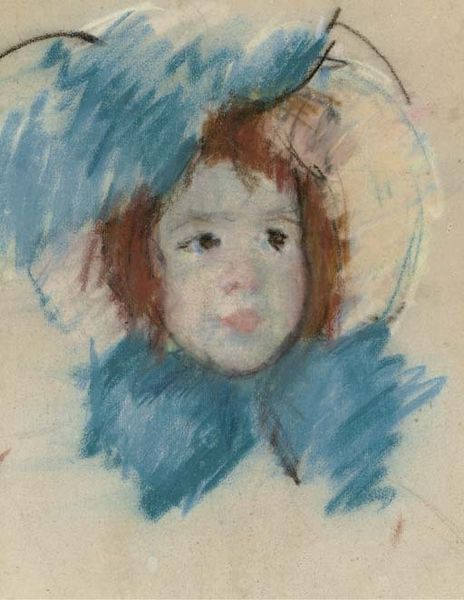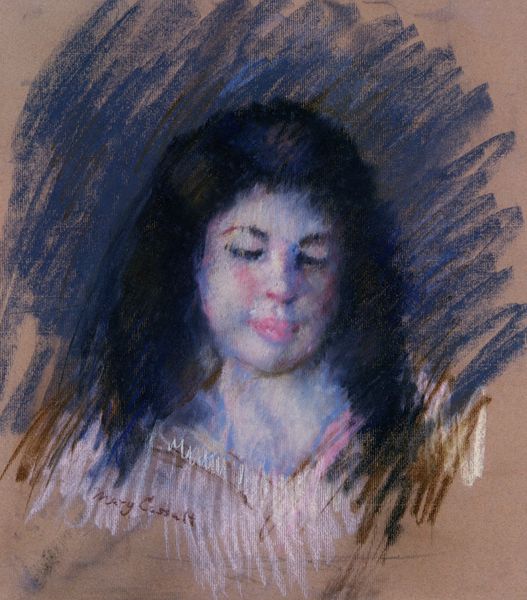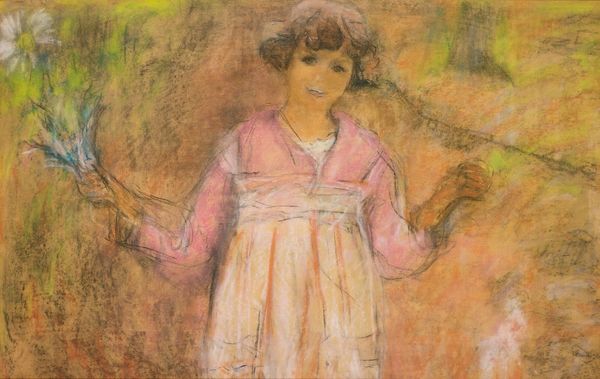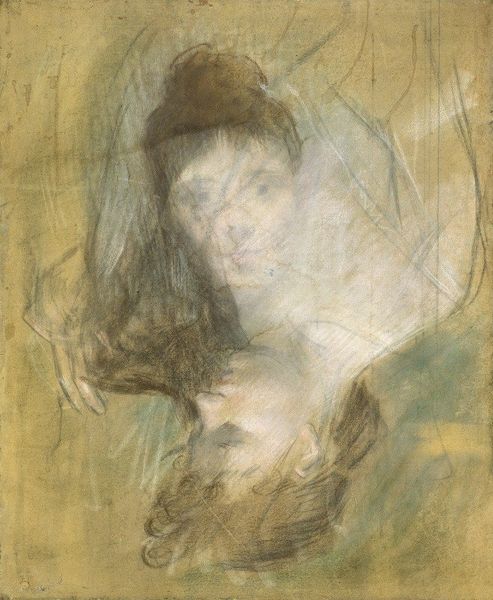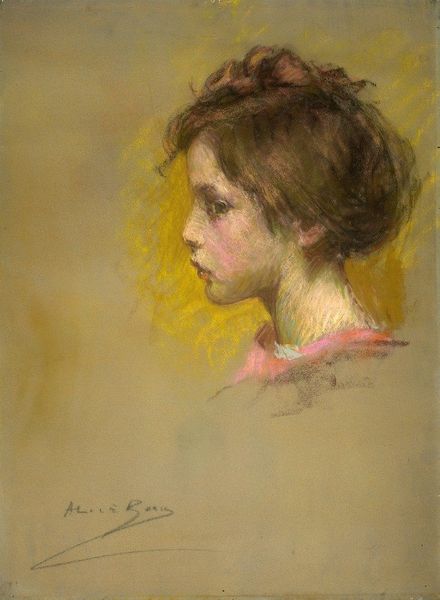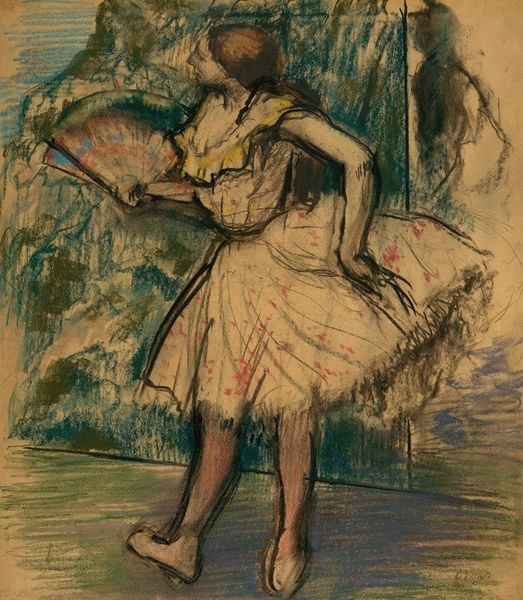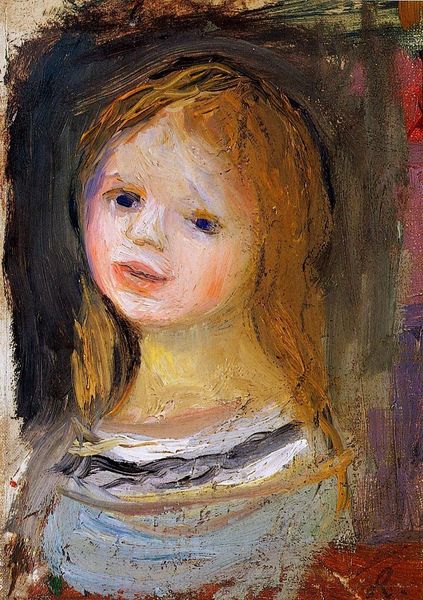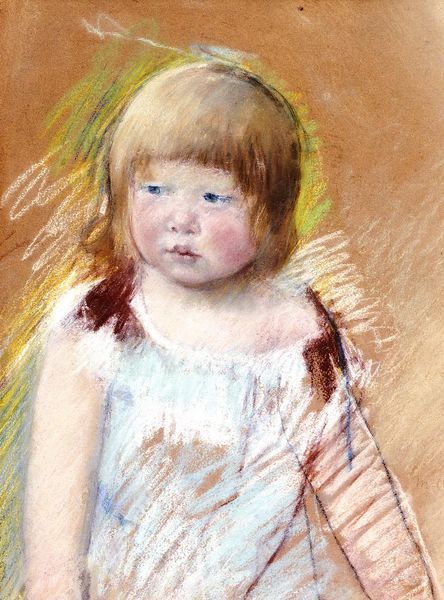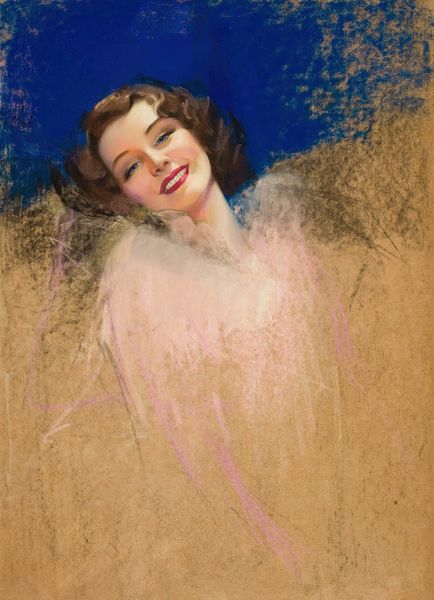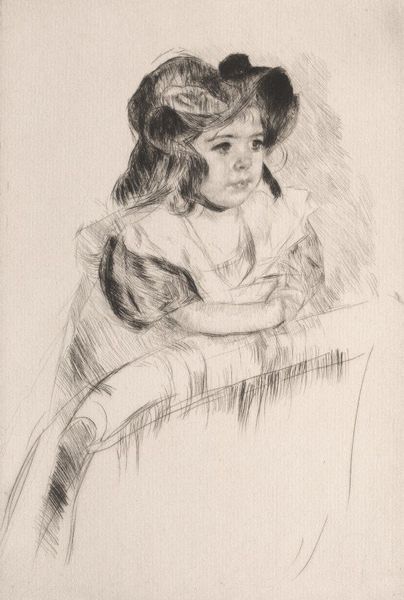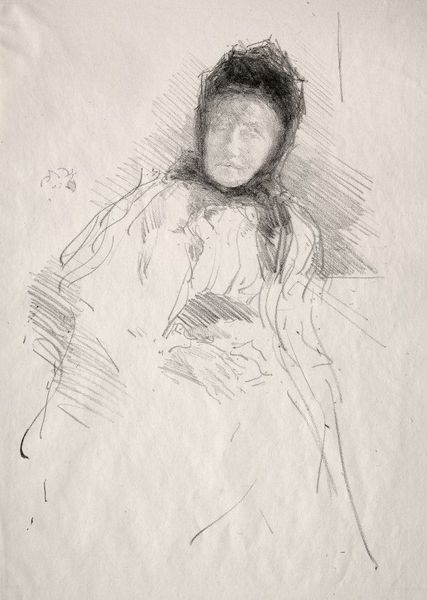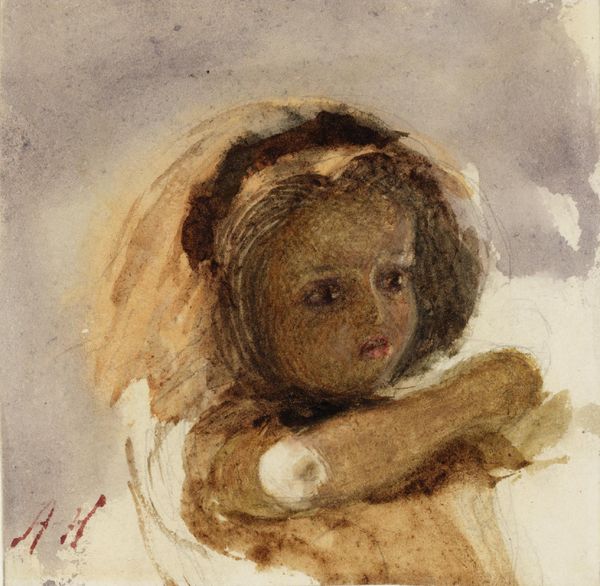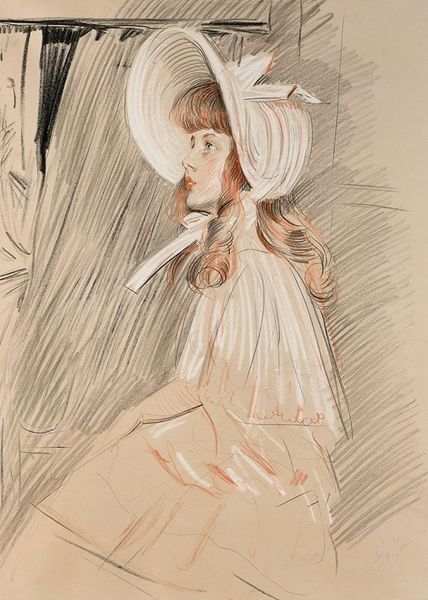
Copyright: Public Domain: Artvee
Editor: Here we have Mary Cassatt's "Buste de fillette" from 1902, created using oil paint and pastel. It’s a beautiful sketch of a young girl. I am struck by its gentle quality, and the way the pastel softens the features. What do you see in this piece, particularly in how she portrays this young girl? Curator: The apparent softness, as you call it, is quite deliberate, achieved through very careful, knowing techniques. Consider the hat—it's rendered as an aura, a cloud. Doesn’t that visual language recall earlier religious icons and their halos? Think about how those symbols conveyed innocence and purity through visual cues. Editor: Yes, I see that now! So, are you saying she's intentionally invoking a connection to religious iconography? Curator: It's not a direct transposition, more of a… resonance. Cassatt was deeply interested in exploring the inner life, especially of women and children. This girl’s gaze, framed by the almost ethereal hat, prompts a similar response of reverence or protection we might feel towards a religious icon. But Cassatt is reframing this into a more secular, intimate tenderness, isn't she? What does it suggest to you about societal expectations for young girls at the time? Editor: I suppose it links to idealized expectations, but also emphasizes vulnerability? That hadn’t occurred to me before. Curator: Exactly. Consider the very deliberate incompleteness, the sketched-in quality. It mirrors the fluidity of childhood itself – a stage of becoming, rather than a fixed identity. Editor: I'm struck by how she balances intimacy with a certain timeless quality. Curator: Indeed. It's an invitation to look beyond a simple portrait, towards the deeper currents of feeling and meaning embedded in this deceptively simple image of childhood. Editor: This has given me a completely new perspective on the cultural underpinnings of Cassatt's work.
Comments
No comments
Be the first to comment and join the conversation on the ultimate creative platform.
